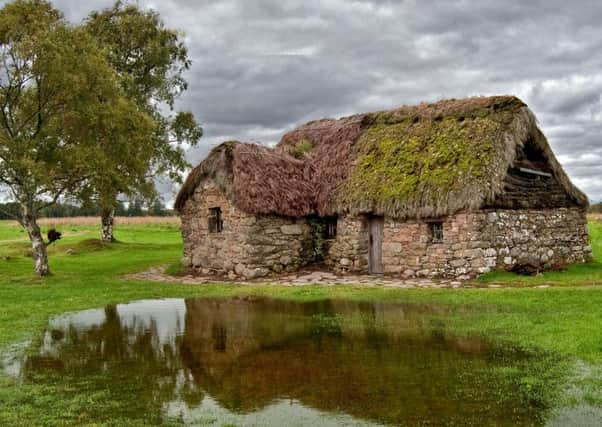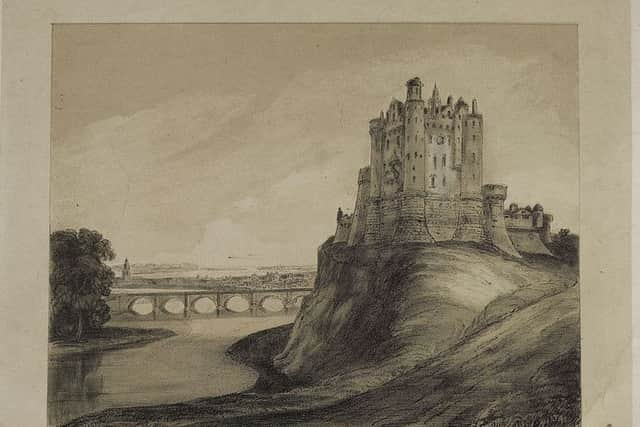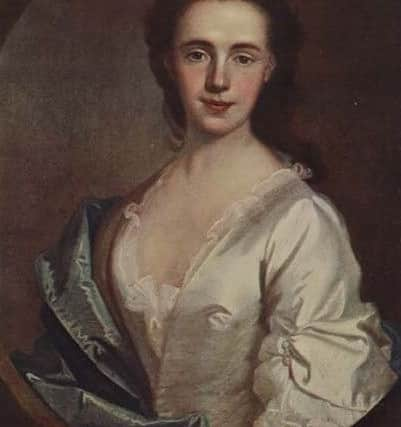The silent Jacobite wife sentenced to 800 lashes


But Anne McKay, born a MacLeod on Skye, refused to give up the names of her collaborators during her interrogation at the hands of Colonel Leighton of Blakeney’s Regiment after the disappearance of the solider came to light.
Her silence was to cost her dearly.
McKay was ultimately spared the lashings following intervention by Lady Anne Mackintosh, a high-standing and influential Jacobite whose class and good looks were enough to catch the attention of the top Hanoverian operators.


Advertisement
Hide AdAdvertisement
Hide AdInstead, she was forced to stand for three days and three nights and subjected to considerable verbal abuse. Anne McKay still refused to spill the names of her associates, long thought to include Lady Anne.
Even a 10 guinea sum was not enough to sway her and efforts to get her drunk on strong liquor to make a confession more likely also failed.
McKay was released from prison after seven weeks, according to accounts.
But as a further, devastating punishment, government forces were to track down McKay’s 17-year-old son and beat him so fiercely that he died from his injuries three days later.


McKay’s account of her imprisonment appears in the Lyon in Mourning, a collection of speeches, letters and journals linked to the affairs of Prince Charles Edward Stuart.
The testimony was received by Bishop Robert Forbes, of Ross and Caithness, on October 31 1748.
McKay had moved to Inverness from Skye with her children, one just a baby, to await news of her husband, who she later learned had died at the siege of Carlisle in November 1745.
Advertisement
Hide AdAdvertisement
Hide AdShe was described as a “wise, sagacious creature” who was thought fit to look after “distressed gentlemen” following Culloden, which she did until March 1747.


In her care was Robert Nairn and Ranald MacDonald of Belfinlay, both injured at Culloden and thrown out of a field hospital designated for government led forces. Both were moved to Anne McKay’s cellar, with a guard placed on duty.
A plot was laid by some “charitable ladies” to help Nairn to make his escape, with MacDonald too injured to move.
The account added: “Of this plot the poor Highland woman was made principal manager, and indeed she managed wonderfully.
“For after equipping Nairn in the warmest manner he could then be clothed in, she decoyed the century of the door of the cellar into a back close just off it, by which means Nairn slipt (sic) out and made his escape.


“The guard was not alarmed with this accident till next morning, when all were in an uproar, but particularlie (sic) one Colonel Leighton, who ordered immediately this woman to be seized and her house ruffled.”
She was first interrogated by a Baillie Fraser “in the Irish tongue” but McKay according to the account, played down Nairn’s standing, saying he wasn’t a McLeod or a Macdonald “or any Mack at all” but a fisherman who did not belong to the town.
Advertisement
Hide AdAdvertisement
Hide AdRefusing money for answers, she was sent to stand for three days with the account
An Irish woman was sent with “strong liquor in order to intoxicate her, and that then she might confess.”
She refused to drink to “Sharly’s” health, claiming as a McLeod she liked the Duke. She refused to take a hot pot or posset as she did not know what it contained, saying instead she preferred milk and whey.
The account in Lyon in Mourning adds: “Every method proving ineffectual to extract a confession she was put into the town’s tollbooth, where she was kept for some weeks, and she was to be drubbed through the town had not interest been made to get it prevented….”
The account states that Anne McKay was with Forbes when the five page report of her experience was read back to her and that it was “very exactly narrated”.
It added: “She told me that after her getting out of prison, the soldiers so beat and bruised her son of 17 years of age that he died three days after”
Maggie Craig, author of Damn Rebel Bitches, The Women of the ‘45, said that the treatment of Anne McKay was in stark contrast to the conditions afforded to Lady Anne, who was visited by a strong of Hanoverian offices while in Inverness prison.
Advertisement
Hide AdAdvertisement
Hide AdCraig said: “While Anne Mackintosh and her redcoated admirer were sipping the finest Bohea tea, another Anne was just yards away, but having a very different experience of captivity.
“Anne McKay was tortured....no gallant officers drank tea with her. But then Anne McKay was not a lady. The velvet gloves were off when it came to dealing with mere women.”